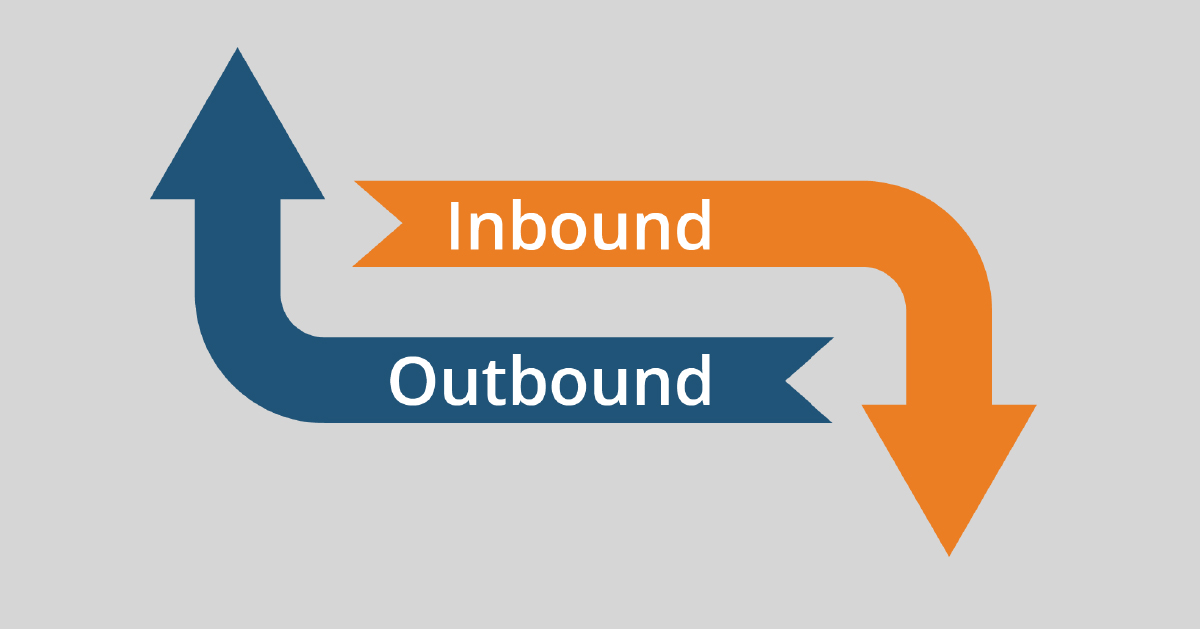Companies have problems. All sorts, shapes, and sizes. Sales solves a lot of those problems. Because of that, companies attempt to grow revenue in all sorts of ways. Direct sales, channel partners, networking, chat bots, inbound marketing, manufacturer’s reps, webinars, events…the list goes on and on. The approach will vary based on industry, offering, and client needs. Planning the right tactics and strategy are critical to gaining traction against competitors and breaking people from the status quo.
Implement Inbound Marketing
Over the last decade, there has been a huge push toward inbound marketing. I’ve seen several of my clients grow multi-million dollars on inbound alone. This would include website content, SEO, blog content, video content, social media, eBooks, webinars, surveys, case studies and analyst reports.
I’ve worked with others that have grown the old-fashioned way – outbound sales. Cold emailing, cold calling, door knocking, networking, direct mail, events, display ads, TV and radio ads, and press releases.
Either way you go about it, companies that I see getting stuck (growth-wise) are the ones that have grown by only choosing one or the other. Modern sales and marketing approaches must employ both inbound and outbound techniques to accelerate and maximize growth.
So how do the two live in unison? What is the best way for them to complement one another? This topic has been on my mind a lot lately, as it has for many of my clients. Without a thoughtful inbound approach, your outbound efforts are less powerful. Without smart outbound methods, your inbound efforts may never get seen by your dream clients. You will see dramatic growth at the top of your pipeline when you have both strategies working in lockstep.
Combine Marketing and Sales
Gartner has done some eye-opening research on the B2B buying journey. It lays out some agonizing truths about the reality of that journey. Much like the path to success, it is not linear or always moving in the right direction. They define six different buying jobs:
- Problem Identification
- Solution Exploration
- Requirements Building
- Supplier Selection
- Validation
- Consensus Creation
The confusing thing is that these can all be going on simultaneously. Depending on the job being performed (and the person doing it), a salesperson needs to know the right play. When deals are “mid-pipeline” for a salesperson, the prospect is making decisions on their own behind closed doors. Marketing teams play a critical role in keeping sales engaged even after a prospect is in the pipeline. There is no longer a “hand-off” from marketing to sales. The two must learn to zig-zag together as the organization navigates the decision. The higher the price tag and more complex the solution, the twists and turns are sharper and have higher stakes.
For most all sales organizations, the “sales process” is linear and doesn’t plan for all these behind-the-scenes twists and turns. Sales leaders see deals linger in certain stages for weeks or months with no movement. Reps get caught in the ‘hurry up and wait’ game as things play out behind the prospects’ doors and deals lose momentum. Time kills deals.
Understand Your Customers
One way to address this modern buying journey is to understand where and how you can add value along the way. Building a grid will help lay out what you need from both an inbound and outbound standpoint. Think about the questions asked and comments made by prospects as they are navigating their decision. The answers will lead your decisions as to what resources and tactics to deploy – keeping in mind that the goal is to act as a guide for them during their journey.
This blended approach of inbound and outbound techniques can accelerate sales when executed properly. With the onslaught of marketing and sales technologies and the speed at which the market moves, your approach must stay nimble and responsive. Look at sales and marketing as one combined revenue department and combine their goals. The singular focus will lead to better execution and more sales. And for your company…fewer problems!
To learn more sales and marketing tips for your business, explore our online resources!

